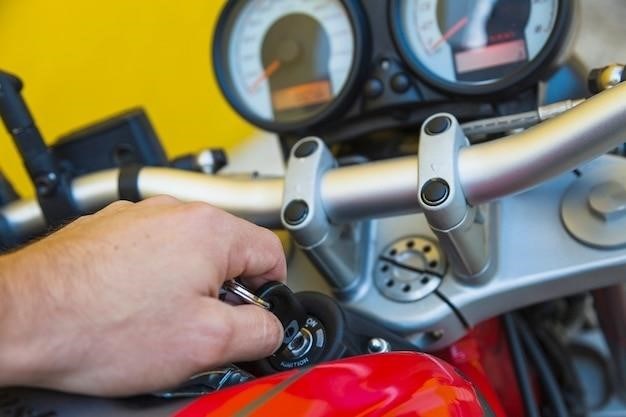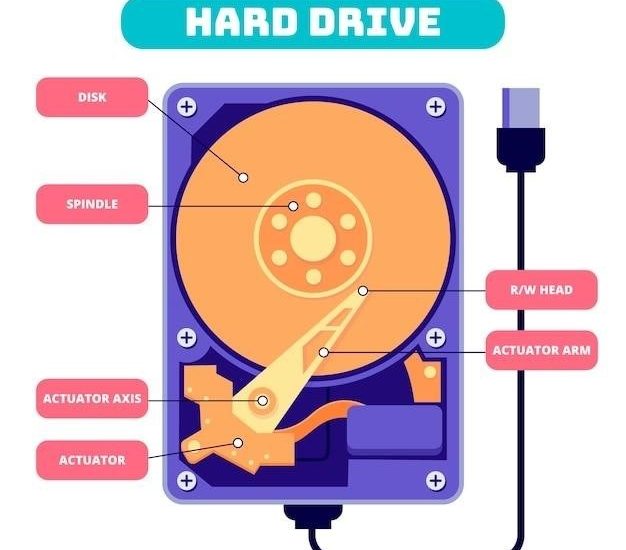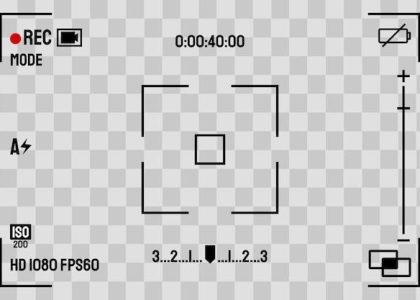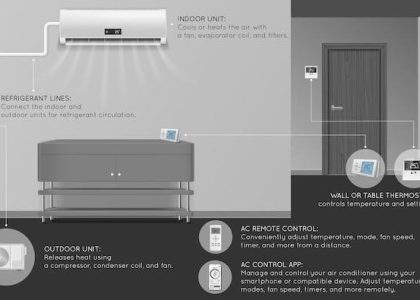SC400 Manual Swap⁚ A Comprehensive Guide
This comprehensive guide will delve into the intricacies of converting your Lexus SC400 from an automatic to a manual transmission. We’ll explore the motivations behind such a swap, the various transmission options available, essential parts and components, the installation process, potential troubleshooting, the cost involved, and ultimately, the rewarding conclusion of driving your SC400 with a stick shift;
Introduction
The Lexus SC400, a luxurious and powerful grand tourer, was originally equipped with an automatic transmission. However, for those seeking a more engaging and visceral driving experience, a manual transmission swap presents a compelling option. This conversion transforms the SC400 from a refined cruiser into a driver’s car, allowing enthusiasts to fully exploit the 1UZ-FE engine’s potential while enjoying the tactile connection of a manual gearbox. The manual swap not only enhances driving dynamics but also adds a distinct element of personalization and exclusivity to the SC400, making it stand out from the crowd.
Why Swap to Manual?
The allure of a manual transmission swap in an SC400 stems from a desire for a more engaging and interactive driving experience. Manual gearboxes offer a greater sense of control and driver involvement, allowing for precise gear selection and a more connected feel with the car’s performance. This enhanced control translates into a more rewarding and thrilling driving experience, especially when navigating winding roads or pushing the car’s limits on a track. Furthermore, the tactile feedback of shifting gears and the ability to rev-match for smooth downshifts add a level of driver engagement that automatics simply cannot replicate. For those who appreciate the art of driving, a manual swap elevates the SC400 from a comfortable cruiser to a true driver’s car.
Choosing the Right Transmission
The choice of transmission for your SC400 manual swap is a crucial decision, as it determines the overall performance, drivability, and longevity of your project. Popular options include the W58, R154, and V161 from Toyota, each with its own strengths and weaknesses. The W58, a robust and readily available unit, offers a good balance of strength and affordability. The R154, known for its durability and ability to handle more power, is a popular choice for those seeking a transmission that can withstand higher horsepower levels. The V161, while more expensive, boasts exceptional strength and is ideal for high-performance applications. Beyond Toyota transmissions, the T56 and Aisin AR5 are also considered, offering alternative options with specific strengths and compatibility considerations. Ultimately, the best transmission for your SC400 depends on your budget, power goals, and desired driving experience.
W58
The W58, a five-speed manual transmission originally found in the Toyota Supra MK3 and other performance models, is a popular choice for SC400 manual swaps. It’s known for its durability, affordability, and relatively easy availability. The W58 offers a good balance of strength and responsiveness, making it suitable for both daily driving and occasional spirited driving. While it may not be as robust as the R154, it provides a reliable and enjoyable driving experience. Finding a W58 in good condition is relatively straightforward, with many available in the used market. However, it’s important to ensure the transmission is in good working order and has been properly maintained before installing it in your SC400.
R154
The R154, a robust and durable five-speed manual transmission, is another popular choice for SC400 manual swaps. This transmission, known for its strength and reliability, is often found in Toyota’s high-performance vehicles like the Supra MK4 and the Lexus IS300. It is capable of handling significant power and torque, making it a suitable option for those looking to enhance the performance of their SC400. However, its robust nature can make it slightly heavier than the W58 and finding a good quality R154 might require more effort and potentially a higher price point than the W58. Despite these considerations, the R154 is a well-respected transmission that offers a reliable and engaging driving experience for SC400 owners seeking a manual swap.

V161
The V161, a six-speed manual transmission, is a popular choice for those seeking a more modern driving experience. While less common than the W58 and R154, the V161 offers a closer gear ratio spread, allowing for smoother acceleration and better fuel economy. It’s generally found in high-performance Toyota vehicles such as the Supra MK4 and the Lexus IS300, making it a capable choice for handling significant power. However, its increased complexity and popularity among performance enthusiasts can drive up the price, making it a more expensive option compared to the W58 and R154. Nevertheless, the V161 offers a compelling blend of performance and refinement, making it an attractive option for those seeking a six-speed manual transmission in their SC400.
T56
The T56, a six-speed manual transmission, is a popular aftermarket choice for the SC400 manual swap. While not a direct fit for the 1UZ-FE engine, it offers significant advantages. Known for its strength and durability, the T56 can handle substantial horsepower, making it a suitable option for modified or high-performance SC400s. It offers a wide gear ratio spread, allowing for both smooth acceleration and efficient cruising. However, the T56 swap requires custom adapter plates and modifications to the transmission tunnel, making it a more complex and potentially expensive undertaking compared to using Toyota-specific transmissions. The T56, with its ability to handle high power outputs and its modern six-speed setup, remains a tempting option for those seeking a robust and performance-oriented manual transmission for their SC400.
Aisin AR5
The Aisin AR5 transmission, a five-speed manual gearbox found in various Toyota and Lexus models, presents an intriguing option for SC400 manual swaps. Notably, the AR5 is known for its robust construction and ability to handle moderate power levels, making it a viable choice for stock or mildly modified SC400s. However, the AR5’s compatibility with the 1UZ-FE engine requires custom adapter plates and potentially modifications to the transmission tunnel. While it offers a smooth and reliable shifting experience, its availability might be limited compared to more commonly used transmissions like the W58 or R154. The Aisin AR5, with its robust design and proven reliability, provides a compelling alternative for those seeking a less conventional manual transmission swap for their SC400.
Necessary Parts and Components
A successful SC400 manual swap necessitates a carefully curated selection of parts and components. These essential items ensure proper integration of the manual transmission, clutch system, and shifter into the vehicle. The list includes a custom adapter plate to bridge the gap between the 1UZ-FE engine and the chosen manual transmission, a flywheel compatible with the selected transmission, a clutch assembly tailored for the engine and transmission combination, and clutch lines to connect the master and slave cylinders. Additionally, a manual clutch pedal and bracket are essential for operating the clutch, while a manual brake pedal may also be required depending on the existing brake system. Finally, a shifter assembly, tailored to the chosen transmission, and a driveshaft compatible with the new setup complete the list of necessary components for a successful SC400 manual conversion.
Adapter Plate
The adapter plate is a crucial component in the SC400 manual swap, acting as the bridge between the 1UZ-FE engine and the chosen manual transmission. This critical piece ensures proper alignment and bolt-up between the engine and transmission, allowing for a secure and functional connection. Adapter plates are specifically designed for each engine and transmission combination, ensuring compatibility and optimal performance. A well-crafted adapter plate is essential for a seamless and reliable manual conversion, eliminating potential issues related to misalignment or improper mounting. The adapter plate also plays a vital role in transferring power efficiently from the engine to the transmission, contributing to a smooth and responsive driving experience.
Flywheel
The flywheel is a critical component in a manual transmission system, acting as a rotating mass that stores energy and smooths out engine power delivery. In a manual swap, the stock automatic flywheel needs to be replaced with a compatible manual flywheel; The manual flywheel is designed to accommodate the clutch and starter, ensuring proper engagement and smooth starting. There are two main types of flywheels⁚ steel and aluminum. Steel flywheels are typically heavier and provide more inertia, resulting in a more substantial feel and potential for better low-end torque. Aluminum flywheels, on the other hand, are lighter, reducing rotational mass and potentially improving acceleration. The choice between steel and aluminum depends on individual preferences and intended use. It’s essential to select a flywheel that is compatible with the chosen transmission and clutch system for optimal performance and longevity.
Clutch
The clutch is the heart of a manual transmission system, acting as the interface between the engine and the transmission. It allows the driver to engage and disengage power transfer, enabling smooth gear changes. Choosing the right clutch is crucial for a successful manual swap. Factors to consider include the transmission type, engine power, and intended use. A heavy-duty clutch is recommended for high-power applications, while a lighter-duty clutch may suffice for street-driven vehicles. The clutch assembly consists of a pressure plate, clutch disc, and release bearing. The pressure plate applies force to the clutch disc, engaging the transmission. The clutch disc, with its friction material, transmits power from the engine to the transmission. The release bearing assists in disengaging the clutch by pressing against the pressure plate. It’s essential to choose a clutch kit that is compatible with the flywheel, transmission, and engine for optimal performance and longevity.
Clutch Lines
Clutch lines are the hydraulic conduits that connect the clutch master cylinder to the slave cylinder. They transmit hydraulic pressure from the master cylinder to the slave cylinder, which in turn actuates the clutch release mechanism. It is essential to use high-quality, compatible clutch lines that are designed for the specific application. The lines should be free of leaks and kinks to ensure proper hydraulic pressure transfer. When installing clutch lines, it is important to bleed the system to remove any air bubbles that may have entered during the process. Bleeding the system involves repeatedly depressing the clutch pedal while opening and closing the bleeder valve at the slave cylinder. This process ensures proper hydraulic pressure and clutch operation.
Clutch Pedal and Bracket
The clutch pedal and bracket are critical components of the manual transmission system. The clutch pedal provides the driver with the means to engage and disengage the clutch, while the bracket provides the mounting point for the pedal assembly. When converting an SC400 to manual, you’ll need a clutch pedal and bracket designed specifically for the 1UZ-FE engine and the chosen transmission. The pedal assembly should be compatible with the existing pedal box and provide adequate clearance for the master cylinder and other components. It’s important to ensure that the clutch pedal assembly is properly installed and adjusted to provide a smooth and responsive feel. The bracket should be securely mounted to the firewall or chassis, ensuring that it is properly aligned and supports the pedal assembly.
Manual Brake Pedal
The manual brake pedal is an essential component in the manual transmission conversion, as it allows for independent braking control while the clutch is engaged. When swapping to a manual transmission, you will need to install a manual brake pedal that is compatible with your SC400’s chassis and pedal box. The brake pedal should be mounted securely and adjusted properly to provide a comfortable and responsive braking experience. Additionally, ensuring the brake pedal is properly aligned with the clutch pedal can help prevent any accidental engagement or disengagement of the clutch during braking. The manual brake pedal will typically require a master cylinder specific to manual transmission vehicles. The master cylinder, which is responsible for converting pedal pressure into hydraulic pressure, needs to be compatible with the brake system and provide sufficient hydraulic pressure to the brake calipers.
Shifter
The shifter is the interface between the driver and the transmission, allowing for gear selection. Choosing the right shifter is crucial for a comfortable and precise driving experience. Some popular options include short-throw shifters, which provide a more direct and quicker gear change, and custom-made shifters that can be tailored to the driver’s preferences. The shifter should be mounted securely and adjusted to the driver’s reach and ergonomic comfort. It should also be connected to the transmission linkage, ensuring smooth and accurate gear engagement. The shifter’s position and linkage should be carefully aligned to avoid interference with other components in the cabin. A well-installed shifter will improve the overall driving experience and make the manual transmission swap feel like an integral part of the car’s design.
Driveshaft
The driveshaft is a crucial component that transmits power from the transmission to the rear differential. When swapping a manual transmission, it’s essential to ensure the driveshaft is compatible with both the new transmission and the rear differential. In some cases, the stock driveshaft may need to be modified or replaced with a custom-made driveshaft to ensure proper length and alignment. The driveshaft should be balanced to prevent vibrations and ensure smooth operation. A properly installed driveshaft will ensure efficient power transfer and a comfortable driving experience. The driveshaft should be inspected for wear and tear, especially after a manual transmission swap, and replaced if necessary.
Installation Process
The installation process for a manual transmission swap in an SC400 is a complex and time-consuming undertaking that requires a significant amount of mechanical expertise. It involves removing the existing automatic transmission, installing the new manual transmission, connecting the clutch pedal and master cylinder, installing the shifter, and finally, installing the driveshaft. Each step requires precision and attention to detail to ensure proper functionality and prevent any potential issues. It’s strongly recommended to have a detailed guide, access to specialized tools, and a thorough understanding of the vehicle’s mechanics before attempting this swap. The installation process can be challenging but ultimately rewarding, offering a more engaging driving experience with the manual transmission.
Removing the Automatic Transmission
The first step in the SC400 manual transmission swap is to remove the factory automatic transmission. This process typically involves disconnecting the transmission cooler lines, removing the exhaust manifold, detaching the driveshaft, and unbolting the transmission from the engine. Carefully lowering the transmission from the engine bay requires proper lifting equipment and support to avoid damage. It’s essential to disconnect the electrical connectors and any hydraulic lines associated with the automatic transmission before removing it. Once the transmission is removed, you’ll need to thoroughly clean the mating surfaces on the engine and transmission bellhousing before installing the new manual transmission.
Installing the Manual Transmission
Once the automatic transmission is removed and the mating surfaces are cleaned, you can begin installing the manual transmission. This process involves carefully aligning the transmission with the engine and bolting it into place using the adapter plate. Ensure that the clutch disc is properly installed on the flywheel and that the pilot bearing is in place. Connect the driveshaft to the transmission, making sure that the splines are properly aligned. It is vital to properly torque all bolts and fasteners to avoid leaks or failures. Connecting the clutch lines to the master cylinder and slave cylinder is crucial for proper clutch function. Once the manual transmission is securely installed, you can move on to the next step of the swap.
Connecting the Clutch Pedal and Master Cylinder
The clutch pedal and master cylinder are essential components for operating the manual transmission. After installing the clutch pedal and bracket, you’ll need to connect the clutch hydraulic lines. These lines run from the master cylinder to the slave cylinder, which is mounted on the transmission. Properly bleeding the clutch system is crucial to ensure that the clutch engages and disengages smoothly. This involves pumping the clutch pedal until all air bubbles are expelled from the hydraulic lines. A failed clutch bleed can result in a spongy pedal or an inability to engage the clutch. The master cylinder should be mounted securely to the firewall, and the clutch pedal should have proper free play.





